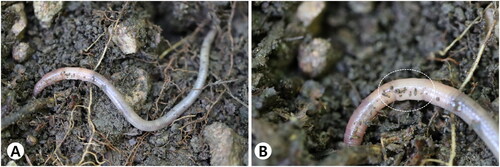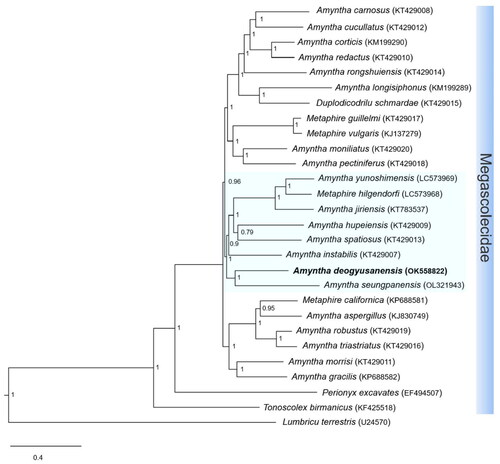Figures & data
Figure 1. Clitellate of Amynthas deogyusanensis. (A) The dorsal view; (B) the clitellum annular XIV–XVI. The photograph from Deogyu Mountain, South Korea by Yong Hong on 2 August 2020.

Figure 2. Circular sketch map of the Amynthas deogyusanensis mitogenome. The mitogenome map was generated with CGView server (http://cgview.ca). Each transfer RNA gene is represented by a one-letter amino acid code. Different colors represent different gene blocks.

Figure 3. Phylogenetic tree of the 27 species of the Megascolecidae family. Phylogenetic analysis was done using Bayesian inference (BI) method, based on whole mitogenome sequences, excluding the non-coding region. The numbers at each node specify Bayesian posterior probabilities (BPP) by BI. The scale bar indicates the number of substitutions per site. Lumbricus terrestris (Boore and Brown Citation1995) is used as the outgroup. GenBank accession numbers are mentioned next to species names.

Data availability statement
The genome sequence data that support the findings of this study are openly available in GenBank of NCBI at https://www.ncbi.nlm.nih.gov/nuccore/OK558822, under the accession no. OK558822. The associated BioProject, SRA, and Bio-Sample numbers are PRJNA769829, SRR16507334, and SAMN22374388, respectively.
